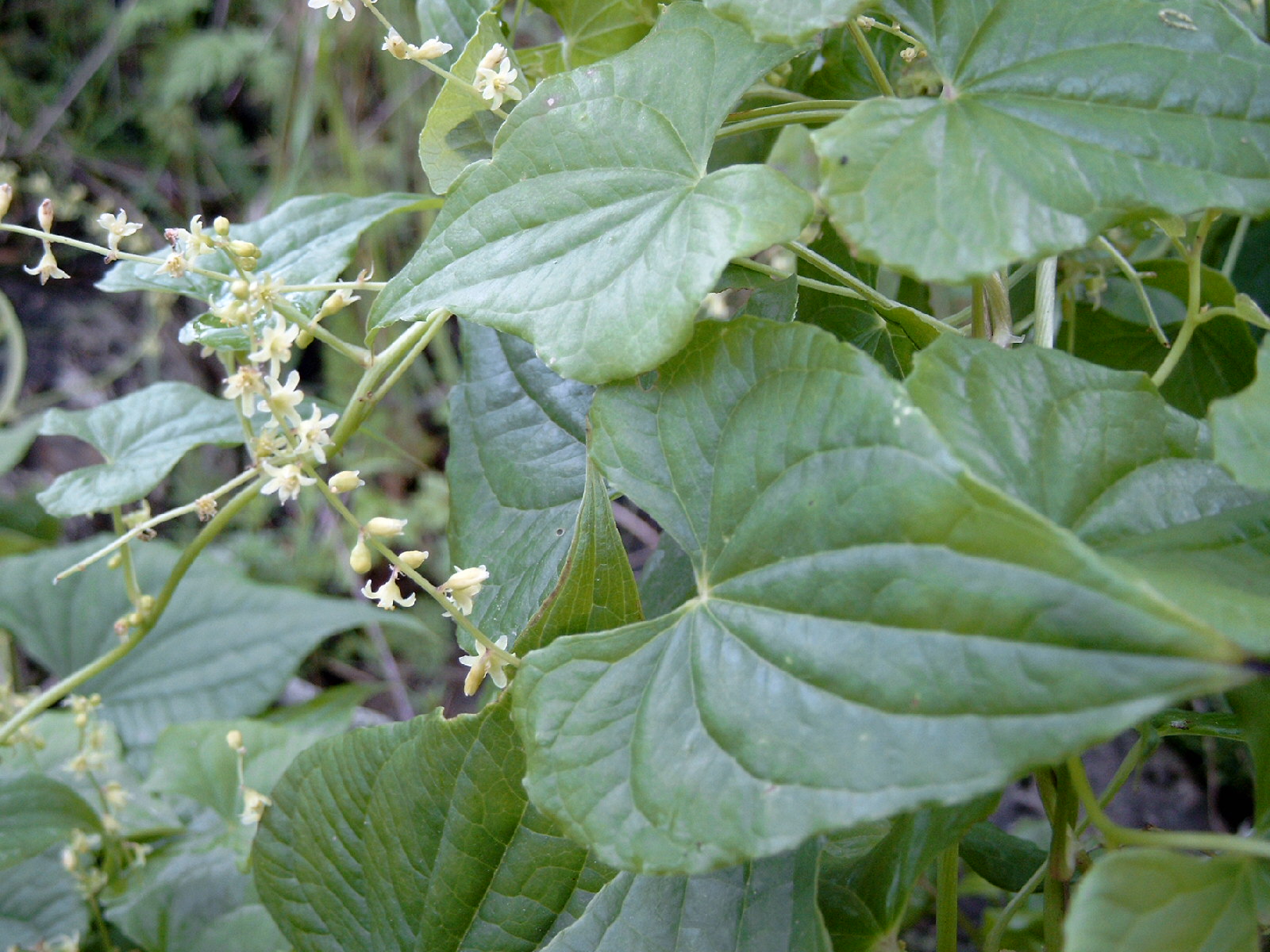- Black Bryony
Taxobox
name = Black Bryony

image_width = 240px
regnum =Plant ae
divisio = Magnoliophyta
classis =Liliopsida
ordo =Dioscoreales
familia =Dioscoreaceae
genus = "Tamus "
species = "T. communis"
binomial = "Tamus communis"
binomial_authority = L.Black Bryony ("Tamus communis", syn. "Dioscorea communis" (L.) Caddick & Wilkin) is a
flowering plant , in the yam familyDioscoreaceae , native toEurope , northwestAfrica and westernAsia .It is a climbing
herbaceous plant growing to 2-4 m tall, with twining stems. The leaves are spirally arranged, heart-shaped, up to 10 cm long and 8 cm broad, with a petiole up to 5 cm long. It is dioecious, with separate male and female plants. Theflower s are individually inconspicuous, greenish-yellow, 3-6 mm diameter, with six petals; the male flowers produced in slender 5-10 cmraceme s, the female flowers in shorter clusters. Thefruit is a bright redberry , 1 cm diameter. Its fairly largetuber is, like the rest of the plant,poison ous.References
*Blamey, M. & Grey-Wilson, C. (1989). "Flora of Britain and Northern Europe". Hodder & Stoughton. ISBN 0-340-40170-2.
* [http://rbg-web2.rbge.org.uk/cgi-bin/nph-readbtree.pl/feout?FAMILY_XREF=&GENUS_XREF=Tamus&SPECIES_XREF=communis&TAXON_NAME_XREF=&RANK= Flora Europaea: "Tamus communis" distribution] Royal Botanic Garden Edinburgh, Inverleith Row, Edinburgh, EH3 5LR, United Kingdom(2008).
Wikimedia Foundation. 2010.
